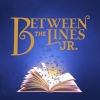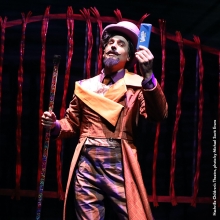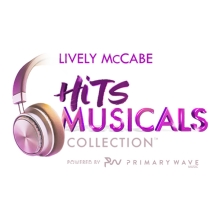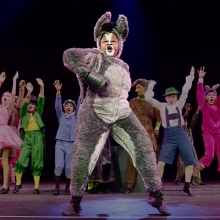Filichia Features: Ahrens and Flaherty Explain it All to You
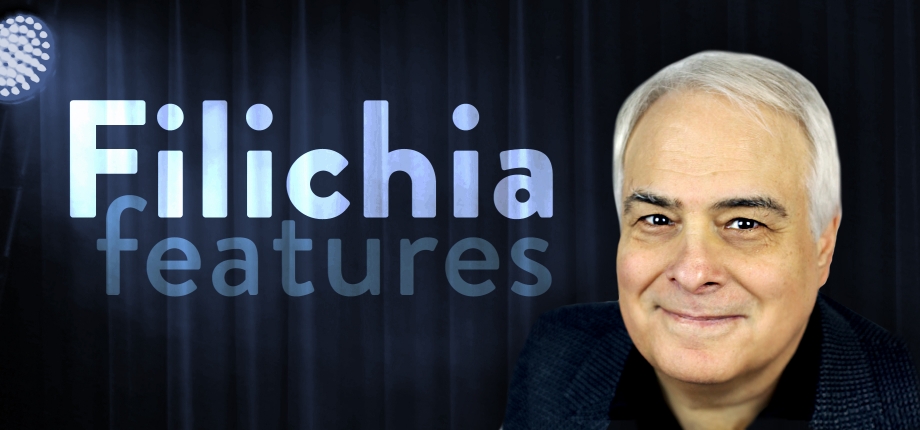
Filichia Features: Ahrens and Flaherty Explain it All to You
Timothy Allen McDonald, CEO of iTheatrics, had four questions for the audience of educational theater directors facing him.
"How many of you have done Once on This Island?" spurred more than half the house to raise a hand.
“How many of you have done it more than once?” yielded fewer arms-in-the-air, of course, but there was still a substantial number.
Then he asked the same two questions about Seussical – and saw even more people raise their hands each time.
"Don't stop now!" said Lynn Ahrens, adding her warm trademark smile to the statement.
Ahrens, of course, has a vested interest in both musicals. For in 1991, she wrote every word of Once on This Island. A decade later, she penned all the lyrics and co-wrote the book of Seussical with Stephen Flaherty, her longtime collaborator who provided the music for both shows. In between, of course, they did Ragtime, for which each won a 1997-98 Best Score Tony.
She and Flaherty were in this Eighth Avenue rehearsal room to hear Joy and Forrest, two young musical theater hopefuls, to respectively perform “Mama Will Provide” from Island and “Solla Sollew” from Seussical. During their senior year at a Pennsylvania high school, both appeared in A Chorus Line – she Connie, he Mike. Now, before they’d head to college, both wanted to hear what the creators of the songs they’d sing would think of their interpretations.
Joy’s performance of “Mama Will Provide” was solid. She enjoyed the “Oh-oh-oh-oh-oh” that follows the first A-section – and that brought back a fond memory for Flaherty. He admitted that Kecia Lewis-Evans, the original Asaka, improvved the “Oh-oh-oh-oh-oh” at a rehearsal. “I didn’t originally write it as a part of his music,” he confessed.
Quipped Ahrens, “It’s called ‘Taking good ideas from actresses.’”
Ahrens applauded what Joy had accomplished before giving some advice. “Ask what the contrast is in this character and what she has inside. Asaka is Mother Earth, who can knock you out, so she’s not a particularly friendly character. Instead, she’s imposing and in fact could easily kill TiMoune – but she happens to like her. Remember, the quality of imposing can be funny, too.”
Flaherty addressed Joy’s impulse to move during the song. “Graciela Daniele,” he said, referring to his Once on This Island director-choreographer, “told me something she’d learned from Bob Fosse. During the first A-section of a song, the performer should either not move or at least keep the movement to a minimum. You must first get the song’s message across; staying still helps that. Once you get the song established, then you can ease into movement.”
Onto “Solla Sollew,” which Forrest gave a heartfelt rendition. Both Ahrens and Flaherty approved the efforts of the young man – he’d turned 18 that very day! -- and then added a few observations.
“We often write about lonely people who try to connect,” she said, “which is almost the universal theme of every great show. Maisie has left Horton the baby, who’s never been responsible for one. Think how you’d feel if you’d never fed or diapered a baby. So your lullaby to the child is one of both terror and determination. You know you’d better think of something to say fast, but you don’t know what to say. So let us see the character making up those words and the story as he goes along. “Yes, it’s a song, but make it a conversational story, too. In other words, when you were about to start the song, you had no idea what you’d be saying.”
Ahrens rose from her seat and gave Forrest her water bottle – not so that he could take a swig, but so he could make it his “baby.” It made a difference. Having the “child” in his hands made him better relate to both it and the situation.
Said Flaherty, “The whole energy of Act Two is about protection. When I was growing up, my parents did everything they could to create the illusion that their children were in no danger, that we were safe. He’s telling the baby that ‘someday we’ll go there,’ too.”
Composer that he is, Flaherty had a few notes about the music: “Analyze the chords, and you’ll see that they take the song from a darker place to a brighter one. That’s why there are minor tonalities at first, until the actual ‘Solla Sollew’ section goes into major. All that was planned, for it enhances the mood emotionally.”
By the way, if you’re doing Seussical and Ahrens accepts your invitation to attend, make certain that your performers not replace a “k” with a “g” on the show’s opening number.
“Too many times I’ve heard ‘Oh, the THINGS you can think,’” she mourned. “No, it’s ‘the THINKS you can think’” – which is indeed in keeping with Dr. Seuss’s fanciful language.
The pair gave some history of how Seussical came to be. Ahrens said that when they started work, they not only read every Theodor Seuss Geisel book, but also read each one aloud. “The sounds of the words were important,” added Flaherty.
“We wound up choosing Horton Hears a Who and Horton Hatches the Egg and decided to condense them,” said Ahrens.
“We liked Gertrude McFuzz, too,” said Flaherty, meaning the bird who was embarrassed at having only one feather and was ready to take any means to improve her lot. “We could comment on the pressure society gives when it comes to image.”
“There was lots of trial and error along the way,” admitted Ahrens – which brought up “The Lorax,” a ten-minute mini-opera that Boston saw but Broadway didn’t.
“Some felt it didn’t make sense,” said Flaherty, “and others argued that not everything has to make sense. It’s on YouTube, so you can make up your own mind,” he added with a shrug.
There are other factors, too. Said Ahrens, “Our job is to have solutions in mind while we’re writing. My motto is ‘Anything’s possible’” – which, of course, became an important theme in Seussical.
“We envisioned a bathtub at one point,” she said, “but if our director had said to us that we couldn’t have a bathtub, I would have said, ‘Fine! Let’s have two chairs!’ We always felt there would be no big ears on Horton or a fuzzy suit, either, because we wanted them to be seen as people.”
Said Flaherty, “I have friends who have written the SpongeBob musical that’s now in Chicago, and they too have decided the actor would not be immersed in a big yellow square but is simply wearing a yellow sweater.”
Added Ahrens, “Seussical is far more successful now because productions are less literal. And that’s what we originally planned. Our workshops in Canada were magical because they used a ladder for a tree, and our audiences filled in the blanks with their own imaginations.”
(Or, in other words, oh, the thinks they could think.)
“And then,” said a sadder-but-wiser Ahrens, “we physicalized it, and that took away the magic that everyone had loved in Canada.”
(Indeed. I've heard Michael Kerker, Vice President of Music Theater at ASCAP, report that he was at that workshop -- and that if he had had enough disposable income, he would have invested every dime of it in what seemed that day to be a sure thing.)
And that brought Freddie Gershon, the Chairman and CEO of MTI, to the stage. “You just heard how there’s no science in writing a musical,” he said. “The Seuss stories existed and they renovated them – not thinking about the checks they’d get, but about making it right while navigating through Broadway’s shark-infested waters.”
“And I can’t even swim,” Ahrens admitted.
Maybe not, but she certainly can write book and lyrics.
You may e-mail Peter at pfilichia@aol.com. Check out his weekly column each Monday at www.broadwayselect.com and Tuesday at www.masterworksbroadway.com. His book, The Great Parade: Broadway’s Astonishing, Never-To-Be Forgotten 1963-1964 Season is now available at www.amazon.com.









